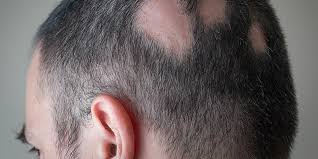Alopecia is a medical term used to describe hair loss that can occur on the scalp or other parts of the body. It can manifest in various forms, ranging from patchy baldness to complete hair loss. This condition affects both men and women and may develop gradually or suddenly, depending on its type and underlying cause.
Among the most common types of alopecia are androgenetic alopecia (male or female pattern baldness), alopecia areata (an autoimmune disorder), and scarring alopecia caused by inflammation or injury. Many individuals exploring treatment options are also curious about Hair Transplant Cost Dubai, especially when considering advanced restoration techniques available in the region.
Causes Behind Alopecia
There is no one-size-fits-all reason for alopecia. The causes can vary significantly, including:
- Genetics: Hereditary pattern baldness is the most prevalent cause, especially in androgenetic alopecia.
- Autoimmune Conditions: In cases like alopecia areata, the body’s immune system mistakenly attacks the hair follicles.
- Hormonal Imbalances: Conditions like thyroid disorders or hormonal changes can lead to significant hair loss.
- Nutritional Deficiencies: Lack of essential nutrients like iron, vitamin D, and protein may contribute to hair thinning.
Understanding the root cause is essential before proceeding with any treatment, including hair transplant procedures.
What Is a Hair Transplant?
A hair transplant is a surgical method used to restore hair by moving hair follicles from a part of the body known as the "donor site" to a bald or thinning area known as the "recipient site." This procedure is widely recognized for treating pattern baldness but has also shown potential in certain types of alopecia.
The two most common techniques are:
- FUT (Follicular Unit Transplantation): Involves removing a strip of scalp from the donor area and dissecting it into grafts.
- FUE (Follicular Unit Extraction): Involves extracting individual follicles directly from the donor area using a minimally invasive approach.
Both methods are effective, and the choice depends on the individual’s condition, hair characteristics, and goals.
Is Hair Transplant Effective for All Types of Alopecia?
Hair transplants can be highly effective—but not universally suitable—for all types of alopecia. Here's a closer look:
Androgenetic Alopecia
This type of alopecia is the most common and suitable candidate for hair transplantation. It typically progresses gradually and leaves a stable donor area (usually the back and sides of the scalp) with healthy hair follicles. For both men and women with pattern baldness, hair transplants offer natural-looking and permanent results. In Dubai, many individuals exploring options for pattern hair loss often search for procedures while factoring in Hair Transplant Cost as a key consideration early in the research stage. However, suitability is primarily based on clinical assessment rather than cost.
Alopecia Areata
This autoimmune disorder causes unpredictable, patchy hair loss. Hair transplants are generally not recommended in active cases of alopecia areata because the transplanted follicles may also be attacked by the immune system, resulting in transplant failure. In some stable or long-inactive cases, transplant might be considered, but only under strict medical supervision and after comprehensive evaluation.
Scarring Alopecia
Scarring or cicatricial alopecia results in permanent damage to hair follicles. It can be caused by trauma, burns, or inflammatory skin conditions. In selected cases, hair transplant can be performed after the inflammation has subsided and the scar tissue is stable. However, outcomes may vary, and such cases require specialized surgical expertise.
Candidate Suitability: Who Can Get a Hair Transplant?
Not everyone with alopecia is an ideal candidate for a hair transplant. A proper medical evaluation is essential to determine eligibility. Here are some criteria to consider:
Stable Hair Loss
Candidates should have a stable pattern of hair loss, particularly in the case of androgenetic alopecia. Active or rapidly progressing hair loss can undermine the success of the transplant.
Healthy Donor Area
The availability of a healthy donor area is critical. The back and sides of the scalp are typically used. Inadequate donor hair can limit the extent of the transplant or rule it out altogether.
Realistic Expectations
While hair transplants can provide impressive results, it's essential to set realistic expectations. The procedure restores hair density but may not achieve the fullness of a youthful scalp in all cases.
Good General Health
Candidates should be in good health, free from uncontrolled medical conditions that may hinder healing or increase surgical risks.
What to Expect from the Procedure
Hair transplant is generally performed under local anesthesia. Depending on the extent of the procedure, it may take several hours to complete. After the surgery:
- Tiny scabs will form around the grafts.
- Shedding of the transplanted hair occurs within a few weeks—a normal part of the process.
- New hair growth begins around 3 to 4 months post-surgery.
- Full results are usually visible within 9 to 12 months.
Patients are advised to follow aftercare instructions carefully to ensure proper healing and optimal results.
Advantages of Hair Transplant for Suitable Alopecia Cases
Permanent Solution
When performed on the right candidate, hair transplants provide a long-lasting or even permanent solution to hair loss.
Natural Appearance
Modern techniques ensure a natural look. Transplanted hairs grow like the rest of the scalp hair, allowing styling and grooming as usual.
Minimal Maintenance
Once healed, transplanted hair requires no special maintenance. It can be washed, cut, and styled like natural hair.
Conclusion
Hair transplant can be a highly effective treatment for certain types of alopecia, particularly androgenetic alopecia. However, not every form of hair loss is suitable for surgical intervention. Proper diagnosis, understanding of the underlying cause, and realistic expectations are key to success.





Comments